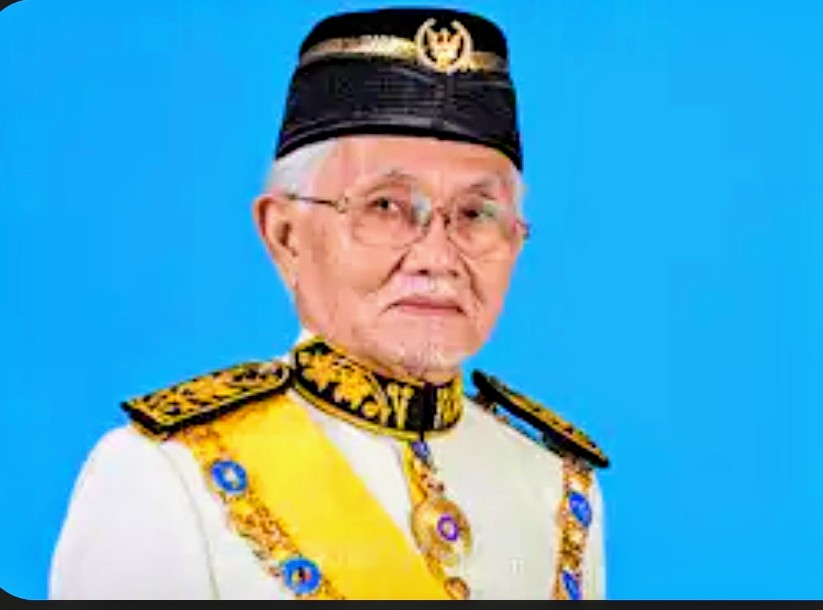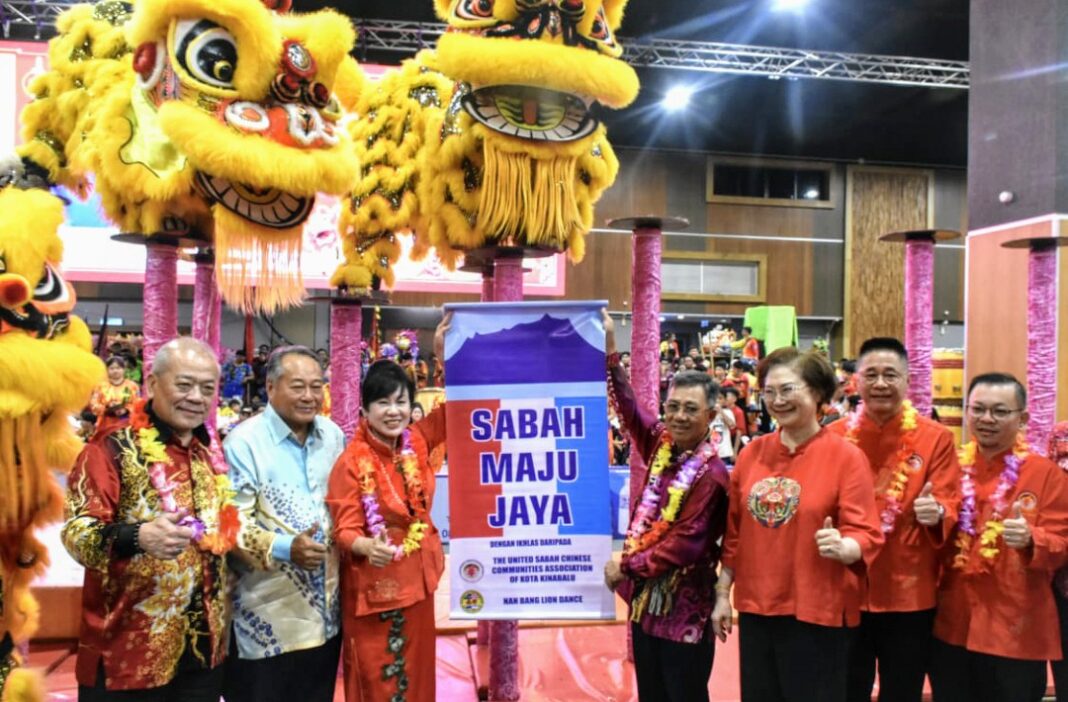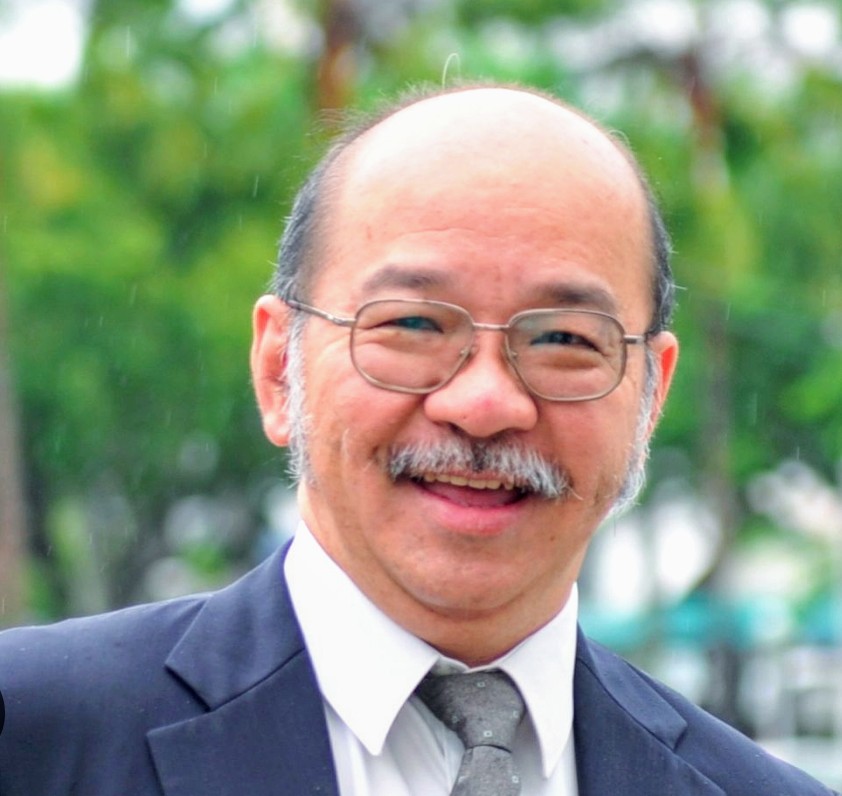SIXTY years of dedicated Service to TUN ABDUL TAIB MAHMUD’S Golden ERA of Sarawak’s Greatest Change and TRANSFORMATION.
By James Ritchie
A young man with Vision for Sarawak.
As the saying goes, behind every great and successful man stands a mother.
And this was so true for Tun Haji Abdul Taib Mahmud—Sarawak’s longest politician-turned cum-governor who celebrates his 84th birthday today.
The woman in Taib’s life was his mother– Hajah Wan Hamidah Yakub who was of Melanau-Malay descent.
Taib was a 23-year-old student in Australia when he lost his father leaving Hamidah to fend for the family.
It was destiny that united in matrimony Pengiran Wan Mahmud—the grandson of Orang Kaya Setia Raja Pengiran Manai of Mukah- and Wan Hamidah.
Even as Taib left the shores of Sarawak so study law at the University of Adelaide, he arrived in a foreign country as a disciplined son armed with the virtues of good character and propriety.
Being the oldest in the family who could hardly send Taib spare cash, great responsibility was placed on the young man’s shoulders as the family lived a frugal hand-to-mouth existence.
When he excelled in school Hamidah persuaded Mahmud to send him to stay with family members in Kuching to continue with his studies at St Joseph’s school.
But providence looked upon young Taib with favour when he found himself in the company of caring classmates and friends in the Catholic mission school.
In those turbulent years when the winds of politics was strongly blowing, the 13-year-old Taib found himself immersed in his studies at St Josephs’ secondary school where his peers comprised a variety of schoolmates from all communities and various parts of Kuching.
Among them was a Cantonese student from Miri Chan Hong Nam who was destined to become a doctor and later Deputy Chief Minister serving under Taib.
Together with his classmates the youngsters burnt the midnight oil and first to leave for his studies abroad Chan who was sent to the University of Sydney in Australia to study medicine.
Dr Chan who was four months younger than Taib said: “When I was sent to for Australia to study medicine in 1954, I was the toast of the class and many including Taib wanted to emulate me and become doctors…”
Even as Taib contemplated following in the footstep of his brilliant classmate, he had to wait another two years after he completed his higher school certificate before leaving for the University of Adelaide in Australia.
However, his dream to become a doctor was dashed when his mother’s younger brother ABDUL RAHMAN YAKUB, nine years his senior and also a St Joseph’s school “old boy” persuaded Taib to become a lawyer.
It was not by design but fate that Rahman travelled to enrolled for a five-year law degree at the University of South Hampton 1954—and it would have been perfect if the duo became Sarawak’s first two Melanau lawyers.
On July 22, 1963–two years after returning to Kuching with his Australian wife Lail Chelecki and two children—was picked to become one of the first six Sarawak cabinet members.
In an interview with Taib, he said: “I never aimed to become a politician or even a minister. Even though I did not stand for election I was asked to help form the Rajang-based political party BARJASA soon after I returned to Kuching.”
BARJASA which was founded on December 29, 1961 was headed by a former Brooke-era Colonial officer, Tun Tuanku Bujang.
Taib added: “Returning to Sarawak as a Queens Counsel gave me the advantage over the others because in those days few people had degrees or any form of tertiary qualifications. But was not interested in politics and dreamed of becoming a judge one day.”
Taking on the Independence Challenge .
As works and communications Minister the 27-year-old Taib was tasked to play a role establishing the basic infrastructure of “fledgling state” emerging from the shackles of Colonialism.
But fate dashed the hopes of the young Taib when he became the victim of internal squabbling between members of the Sarawak Alliance coalition and he was “sent away” to Kuala Lumpur in 1968 to continue with his political journey at Federal level.
It was in Kuala Lumpur that the Member of Parliament, one of two from Sarawak, found a mentor in the Prime Minister Tunku Abdul Rahman who took Taib under his wings.
Taib’s stature and credentials grew while serving in 13 Federal Cabinet portfolios in the 1970s which was Malaysia’s initial decade of socio-economic development.
It was also through the Tunku that Taib groomed with wisdom and patience to prepare him for a greater commission—serve to his motherland and its people.
As a Federal Minister in the Commerce, Primary Industries, Natural Resources, Socio-economic Research, Culture youth and Sport, Tourism, Prime Minister’s Department, Federal Territory and Defence portfolios and was sent abroad on many international missions.
On his appointment as Chief Minister of Sarawak on March 27, 1981 Taib instituted a wide range of policies starting with his “politics of development” to prepare the people to accept his policy of greater change.
But the path to changing the mindset did not come easy because a revolution by the “old guard” in the Sarawak he wanted to change, led by a Snap election in 1987.
After a narrow win Taib began rebuilding his team of new politicians and with the upgrading of educational facilities leading to the establishment of the State’s first university-UNIMAS in 2000.
Since the numerous international institutions such as Australia’s Swinburne and Curtin University as well as local colleges such as Kolej Laila Taib have sprung up in the major towns such as Kuching, Sibu, Bintulu and Miri.
His policy to ensure that the Sarawak has Borneo’s best medical facilities resulted in the birth Timberland, the Sarawak Heart Centre in Samarahan, KPJ specialists and Borneo Medical Centre to name a few.
As leader of all the Sarawak communities, he implemented socio-economic policies sharing wealth with Malays, Chinese, Melanaus and natives living in in longhouses and villages in the vast hinterland.
As care-taker of a vast country dependent on its resources, industries and businesses grew making Sarawak one of the richest States in the Nation.
Yet his conservation efforts to protect the environment resulted in policies that resulted in balanced development between industries and the need to protect our flora and fauna.
Today Sarawak has about 1 million hectares of forests in Totally Protected Areas (TPA), or 8% of Sarawak’s total area.
Inhabitants of Sarawak are prohibited from hunting, fishing and taking any form of forest produce in the TPA.
These TPAs include at least 30 National Parks, Wildlife Sanctuaries, Wildlife Rehabilitation Centres, Nature Reserves and Marine Parks.
An encourager of religious cohesion he was fair in his distribution of funds to all sectors of the three million Muslims, Christians, Buddhists, Taoists, Hindus, Sikhs and people with indigenous practices.
In 2009, five years before he became Sarawak’s sixth Governor Taib upgraded his cabinet retaining the original Ministers and appointing six new state assemblymen as assistant ministers, while the portfolios of others were changed.
Taib said the reorganisation was meant to prepare Sarawak for new development policies and approaches that could take place within the next 20 years period.
The New Millenium.
The new millennium ushered in greater transformation with the building of Bakun and Murum hydro-electric dams in Rajang which provided the energy for the Samalaju Industrial region in Bintulu which was a boon for employment in central Sarawak.
After establishing Tanjung Manis Industrial reserve and the Sarawak Corridor of Renewal Energy (SCORE) on the North Western coast, he reformed Syarikat SESCO Bhd and created the Sarawak Electricity Board—SEB.
Taib contribution to the world of architecture, fine arts, conservation of Sarawak’s rich heritage, demarcated Kuching into two Cities with two separate Mayors on August 1,1988.
Yet while preserving “Old Sarawak” the two cities at Kuching South and the new township of Petra Jaya in the North, has flourished.
With the redevelopment of river bank, Brooke’s Fort Margherita was turned into museum to complement the old Sarawak Museum, a kilometer away.
While work in ongoing to refurbish Old Museum, a new RM400million world-class ultra-modern exhibiting center has also been built 100 yards away.
Sarawak’s “Golden” Sarawak State Legislative assembly or DUN building, adjacent to the Astana where the White Rajahs ruled the country for 100 years, is another work of art.
Its roof has been styled like a “terendak” conical Melanau headgear of coastal fishermen and sago-palm farmers while the interior of is a depiction of the cultures of 24 Sarawak communities.
To uplift the dilapidated Malay kampung houses on the Northern Bank of the Sarawak River, new homes have been, built next to a waterfront has been built to enable the villages to share the benefits of independence.
Another brainchild of Taib—the Darul Hanah Mosque on the opposite bank of the DUN building next to Brooke’s courthouse.
Built on the “old Kuching” bank it was where the Sarawak steamship Company stood adjoining the Main Bazaar and the old Fish market.
The unique Darul Hana mosque, is next to the iconic “S” for Sarawak bridge which is connected to the Astana—the symbol of Sarawak’s Nationhood.
AGONG’s inauguration of Masjid Darul Hana.
The Mosque attracted the attention of the King when Yang DiPertuan Agong Sultan Abdullah and her Royal Highness were guests at it’s opening in April 2019.
After nine years as Head of State, Taib can take pride that Kuching, a sleepy hollow by the river, has become the pride of Malaysia. – Talantang





